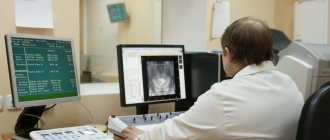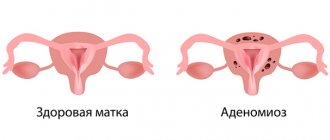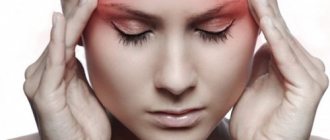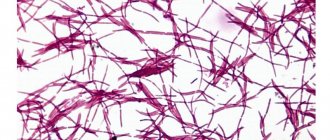Medical treatment of mastopathy is guaranteed to relieve not only the external signs of the disease, but also eliminate the cause of its occurrence. Comprehensive medical care from mammologists, gynecologists and endocrinologists makes it possible to accurately determine why the disease developed and prevent its negative consequences.
In our clinics you can:
- Get a consultation with a mammologist;
- Do an ultrasound of the mammary glands;
- Use the services of a gynecologist;
- And much more.
For more details and any questions, please contact the number listed on the website
We recommend not to delay your visit to the clinic’s specialists, even if you do not have acute signs of mastopathy. A timely examination will allow you to determine the first manifestations of the disease and prevent its development to a dangerous stage that requires conservative treatment.
What is mastopathy of the mammary glands?
Mastopathy is a pathological change in the mammary glands, which is manifested by characteristic fine-grained compactions that cause pain on palpation. Such neoplasms are considered benign, however, if diagnosed untimely and improperly treated, they can degenerate into malignant ones.
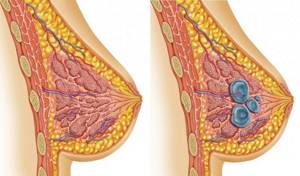
At our medical center, doctors differentiate mastopathy into three types:
- diffuse mastopathy;
- nodular mastopathy;
- fibrocystic mastopathy
Tactics and methods of treatment
Some forms of mastopathy do not require treatment, they just need to be monitored. If the disease progresses, then conservative treatment is prescribed. It is necessary to treat not mastopathy itself, but to eliminate its causes: inflammation of the female genital organs, endocrine pathologies, liver diseases.
For the conservative treatment of diffuse mastopathy, hormonal drugs that normalize the balance are prescribed (as a rule, with mastopathy, an excess of estrogen and a deficiency of progesterone) and drugs that normalize metabolism are prescribed. vitamin and mineral complexes.
For nodular mastopathy, conservative treatment is ineffective. Cysts, fibroids, and large fibroadenomas are removed surgically. Many operations are performed using a minimally invasive method through mini-punctures.
What are the symptoms of breast mastopathy?
The severity of symptoms depends not only on how much the disease has progressed, but also on the emotional state of the patient and whether she suffers from other pathologies.
Classic symptoms of mastopathy include:
- Pain on palpation in the chest (from weak, which can be felt with light pressure, to strong, radiating to other organs and limbs).
- Breast engorgement during menstruation (breast enlargement by approximately 15%).
- Discharge from the nipples of varying intensity (appears both with pressure and spontaneously. Discharge can have a transparent consistency, or cloudy white with greenish, brown or bloody discharge).
- The appearance of nodes (on palpation, one or several compaction balls are palpable).
Each form of mastopathy has its own set of symptoms. Depending on the degree of their manifestation, the doctor determines the diagnosis and first selects the necessary diagnostic methods, and then the method of treatment.
For example, fibrous mastopathy of the mammary glands most often occurs in young women. During the examination, the doctor diagnoses breast enlargement with palpable fine granularity. A characteristic “lobulation” is noticeable, and upon palpation quite severe pain is felt.
If the course of mastopathy is not stopped in time at this stage, the disease will develop into a cystic form. Large neoplasms can reach 70 mm in diameter. They have an oval or round shape with clear boundaries and do not merge with the surrounding tissues.
Treatment of nodular mastopathy
The doctor may prescribe hormonal drugs to eliminate the disorders in the body that led to mastopathy, but the main method of treatment is surgical. The doctor determines the scope of the operation based on the number, size and location of the nodes, data obtained after the biopsy.
If lumps appear in your breasts, it is important to get examined as soon as possible to rule out cancer. Surgical removal of nodes for nodular mastopathy helps to get rid of unpleasant symptoms and prevent cancer in the future. Make an appointment with a mammologist at the International Clinic Medica24 by phone: +7 (495) 230-00-01
What reasons influence the development of mastopathy in women?
- Reproductive dysfunction
Factors that can contribute to the development of the disease include not only infertility, but also late childbirth, abortions and miscarriages. Mastopathy can also be caused by a short period of lactation (less than 5 months), late menopause (after 55 years).
- Irregular sex life
At risk are women who have irregular sex life or are in a state of sexual dissatisfaction.
- Hormonal and metabolic disorders
This also includes the consequences of developing diabetes mellitus, obesity, gynecological diseases with chronic inflammation of organs. A particularly negative effect is caused by dysfunction of the thyroid gland (enlargement, appearance of nodes, hypothyroidism).
- Genetic predisposition
Women whose mothers or grandmothers suffered from breast or genital cancer are also more susceptible to the disease. They need to be constantly monitored by a mammologist (consultation once every six months), even if mild symptoms do not appear.
The risk group also includes women who do not lead a healthy lifestyle: they abuse alcohol and smoke a lot, eat poorly and live in unfavorable environmental conditions. Let us highlight some more special cases that contribute to the development of the disease:
- inflammatory processes in the mammary glands;
- breast injury, including wearing an uncomfortable bra;
- incorrectly selected hormonal contraceptives;
- diseases associated with iodine deficiency in the body;
overweight.
Nowadays, it is a rare woman who does not have mastopathy. The complicated course of mastopathy today increasingly often ends with puncture of the cyst or even removal of the affected sector of the mammary gland. Therefore, every woman should know the signs of mastopathy and the possibilities of its treatment and prevention.
Mastopathy is a benign disease of the mammary gland, manifested in the pathological proliferation of its tissues. It affects about 8 out of ten women and can, without exaggeration, be called the companion of the modern woman. Mastopathy has a significant impact on overall well-being, and in some cases leads to the development of a serious disease - breast cancer.
One of the distinctive features of the mammary gland is that its normal structure is characterized by great variability depending on age, the state of the reproductive system and the period of the menstrual cycle. In this regard, even doctors sometimes find it difficult to distinguish physiological changes in tissue from pathological ones, as well as determine the type of pathology. Mastopathy has many faces. In fact, we can rather talk about a group of diseases - dishormonal dysplasia (developmental disorders) of the mammary gland - which have a complex clinical and histological picture and are united by the general term mastopathy . Hence the many classifications of mastopathy.
Mastopathy is always associated with a hormonal imbalance in the body. Breast tissue is sensitive to the so-called “hormonal swing” that starts in a woman’s body with the onset of puberty and stops some time after menopause. These swings, in turn, are significantly influenced by many external and internal risk factors, of which there are many.
Menstrual cycle and hormones
The menstrual cycle is regulated by two types of reproductive (steroid) hormones produced by the ovary: from the first day to the middle of the cycle, hormones called estrogens are produced, and from the middle of the cycle, when ovulation occurs, gestagens (progesterone), the level of which in the body reaches a maximum before menstruation. In addition, the mammary gland is constantly influenced by hormones from the adrenal glands, thyroid gland and pituitary gland, which are under the control of the cerebral cortex.
Thus, normally, under the influence of hormones, the mammary gland undergoes monthly cyclic changes in the form of engorgement before menstruation and subsidence after menstruation. If, under the influence of some unfavorable factors, the hormonal balance is disturbed, the production of insufficient or, on the contrary, excessive amounts of hormones provokes pathological proliferation of the ducts, connective (fibrous) and glandular tissues of the breast. At the same time, lumps in the mammary gland, characteristic of the premenstrual period, persist after menstruation.
Some researchers associate pathological changes in breast tissue with an excess of estrogen in a woman’s body, the level of which, under unfavorable conditions, does not decrease to almost zero by the end of the cycle, but remains elevated. The cause of the disease may also be an excess production of the hormone prolactin by the pituitary gland, which stimulates the development of the mammary glands, milk production and forms the maternal instinct.
How mastopathy develops
The disease begins with the proliferation of connective tissue, with the formation of small nodules. This is a diffuse form of mastopathy. Its main manifestation is mastalgia - soreness of the mammary gland, which occurs before menstruation and subsides when it occurs, as well as periodically appearing spherical seals in the upper part of the chest. Often women ignore these symptoms without seeing a doctor for years. And they make a dangerous mistake, since it is at an early stage that mastopathy responds well to conservative treatment.
With further development of the disease, dense nodes ranging in size from a pea to a walnut form in the breast tissue. This form of mastopathy is called nodular . Chest pain becomes more intense and can radiate to the shoulder or armpit. The slightest touch to the chest becomes painful. Colostrum, a bloody or clear fluid, may be discharged from the nipple. When feeling the breast, the lobulation or granularity of the tissue is easily determined. At this stage of the disease, pain and changes in the gland do not disappear with the onset of menstruation. Here you can’t hesitate anymore and you need to urgently go to a mammologist.
Main risk factors
Mastopathy is a multi-cause disease associated with both genetic factors and environmental factors and lifestyle factors of patients.
Heredity The hereditary factor is of primary importance. First of all, this is the presence of benign and malignant diseases in maternal relatives. One of the most common unfavorable factors is inflammation of the uterine appendages, because as a result of inflammation, the production of sex hormones is disorganized.
Abortion One of the first factors that can provoke the development of mastopathy is abortion - a gross intervention in the hormonal system of the female body. As soon as a woman becomes pregnant, the entire body begins to prepare for childbirth. The entire hormonal background is completely restructured. The mammary glands begin to prepare for milk production literally from the first days of pregnancy. And suddenly there is a violent reversal of this process. In this case, it does not matter at all how professionally the abortion was performed. In any case, the body does not forgive such jokes.
Diseases of the thyroid gland Most patients with various forms of mastopathy have pathology of the thyroid gland. Hypofunction of the thyroid gland increases the risk of mastopathy by 3.8 times.
Liver diseases An important reason contributing to the occurrence of mastopathy are various diseases of the liver, bile ducts and gall bladder. The liver plays a very important role in breaking down excess estrogen produced. With her illnesses, this ability is reduced and even lost, as a result of which the hormone content increases.
Obesity Obesity , especially when combined with diabetes and hypertension, may play a role.
Irregular sex life Sometimes even a break in sexual activity can trigger the development of mastopathy. Women's loneliness, lack of stable family relationships - all this contributes to the development of pathological processes in the breast. So, as a preventive measure for the disease, we can recommend improving your personal life, and even better, pregnancy and breastfeeding.
Stress A woman is at greater risk of getting sick when she is stressed, neurosed, or depressed. Prolonged mental stress is one of the leading causative factors in the occurrence of mastopathy.
Bad habits Indirect risk factors are addiction to alcohol and smoking. A direct connection has been identified between the quantity and quality of alcoholic beverages and cigarettes consumed and hormonal imbalance, which is the starting point in the development of mastopathy.
Injuries to the mammary gland Even microtraumas are dangerous when in the subway, on a bus you are pressed, squeezed, or accidentally hit in the chest with an elbow or a bag. In general, you need to develop the habit of protecting your breasts. In addition, underwear plays an important role. Under no circumstances should you wear underwear that tightens, squeezes, rubs or pricks. The skin of the chest is almost twice as thin as that on the face, and therefore requires careful treatment. The bra must be exactly the right size—the underwear should never be too small. Avoid push-ups with metal wires. Tight underwear with metal underwires, although very seductive, tightens the breasts and leads to microtraumas.
It turns out that the development of mastopathy is influenced by a woman’s high socio-economic level (diet, career-related stress, ecology of metropolises, late birth of the first child, etc.). The risk of mastopathy and breast cancer increases under the influence of such unfavorable factors as lack of pregnancy or late first pregnancy, lack of breastfeeding or its short period. Almost all researchers focus on the age at which the first and subsequent births occurred. In particular, women who give birth to two children before the age of 25 have a three times lower risk of developing breast disease compared to those who have only one child. Age is also an important risk factor for cancer. Typically, the incidence of breast cancer increases progressively with age and reaches 30-50% by age 75.
Often all these different factors are in a complex relationship, forming an overall unfavorable background. This is what dictates the need for regular comprehensive examination of the mammary glands (self-examination, mammography, regular consultations with a mammologist) for almost every woman.
Symptoms of mastopathy
— Pain in the chest, shoulder or axillary area — Feeling of fullness, swelling, heaviness in the mammary glands — Dull and aching pain in the mammary glands — Discharge from the nipple (colostrum, serous, sometimes bloody) — Appearance of cracks in the nipples, retraction of the skin or nipple — Hardening, thickening of the mammary glands - Tumor in the mammary gland
— The appearance of “nodes” in the mammary glands — Enlarged lymph nodes in the armpits
Painful sensations can be spontaneous or occur only with pressure, ranging from a feeling of slight pain to distinct tenderness caused by even the touch of clothing to the chest. The pain can be aching, stabbing, radiating to the neck and shoulder.
Also, you should be wary of irregular menstruation, pain before menstruation, discharge from the nipples and any changes in the structure and shape of the mammary glands.
Often women ignore these symptoms, mistakenly believing that pain and swelling before menstruation is the norm. This is wrong. Normally, your breasts should not hurt under any circumstances.
If you find any of the above signs, contact your doctor immediately. Because it is at an early stage that mastopathy responds well to conservative treatment.
Diagnosis and treatment
The main diagnostic methods that provide the most complete picture of the condition of the mammary glands are ultrasound and mammography. To finally confirm the clinical diagnosis and clarify the extent of the process in the mammary gland, the doctor may prescribe additional examinations (blood tests for hormones, cytological and histological examination, etc.). Their necessity in each specific case is determined individually by the mammologist.
Only after a thorough examination, the doctor determines treatment tactics. To effectively treat mastopathy, it is first necessary to identify the form and type of mastopathy, and the causes of its occurrence. That is why proper treatment of mastopathy begins with identifying the cause.
To do this, you need to undergo a standard list of examinations:
- examination by a mammologist - ultrasound of the mammary glands, axillary and clavicular areas on the 5-7th day from the start of menstruation, - blood test for thyroid hormones (T3, T4, TSH), ovarian hormones (progesterone, estradiol, FSH), preferably tumor markers - cytological examination of nipple discharge (if any) - ultrasound of the pelvic organs (uterus, appendages) - consultation with a gynecologist
Only after receiving the results of the examination can you determine the method and amount of necessary treatment that is suitable for you, taking into account your hormonal characteristics and the presence of concomitant diseases.
The lack of a uniform standard for the treatment of mastopathy is explained by the multifactorial nature of the occurrence and development of the disease. Taking this into account, treatment should be individualized depending on your age, the nature of the menstrual cycle, ovarian function, concomitant gynecological diseases (endometriosis, uterine fibroids, endometrial hyperplasia, polycystic ovary syndrome), as well as psycho-emotional status and hypovitaminosis.
Don't self-medicate!
You will not be able to independently determine the type and form of the disease, or identify the cause of its occurrence - only a specialist can do this. This means that you will not be able to choose the necessary and correct treatment, even if you “prescribe” yourself medications for the treatment of mastopathy, which are widely advertised in the media. By self-medicating, you will only delay time, possibly getting rid of the symptoms of the disease for a short time. But since the cause will remain, pain and lumps in the mammary gland will bother you again and again. Only long-term complex treatment under the supervision of a doctor will give the desired result and lead to relief from mastopathy.
By contacting our clinic, you can always get advice from a professional mammologist who is always ready to help you in the diagnosis and professional treatment of mastopathy. Be healthy!
How is mastopathy diagnosed?
Even if you discover tumors during a self-examination and are sure of mastopathy, only a mammologist can make a final diagnosis. In order to ensure the veracity of his assumptions, he will conduct an initial examination with palpation, mammographic examination, and ultrasound of the mammary glands.
The first part of the study is carried out in a standing position with arms raised, then the patient needs to lie down on the couch. During the examination, the doctor assesses the presence of breast asymmetry, the degree of enlargement of the glands, the location and condition of the nipples (including the nature of the discharge from them). As a rule, such an examination is sufficient, but in some cases, it is also necessary to use ultrasound and x-rays (mammography) to confirm the diagnosis.
Ultrasound diagnostics allows you to make the most accurate diagnosis, including seeing small tumors (up to 1-2 mm in diameter). Plus, this research method is safe and can be carried out an unlimited number of times. Mammography also has its advantages, but is prescribed quite rarely, for patients strictly over 35 years of age, not pregnant or lactating.
If the initial examination and ultrasound, mammography give a positive result (pathological changes are detected), a puncture of the tumor is prescribed with cytology of the biomaterial taken. As a result, the doctor makes a final diagnosis describing the extent of the disease and methods of treating it.
Why is cystic mastopathy of the mammary glands dangerous?
Treatment of mastopathy of the mammary gland must begin immediately after the doctor makes the diagnosis. Any delay or, even worse, refusal of therapy can lead to the degeneration of tumors, in other words, to breast cancer. That is why mastopathy is often considered a precancerous condition, despite the fact that in the initial stage the neoplasm is benign in nature.
Cancer is not the only danger. Against the background of mastopathy, a background inflammatory process often develops, which can cause infection of the cyst and its suppuration. In addition, there is always a risk that the tumor may burst at any time.
If you have already been diagnosed with mastopathy, you should not rush to extremes and radically change your usual lifestyle. Provided that you follow all the doctor’s recommendations and start treatment in a timely manner, you will not have to endure serious restrictions.
What is possible and what is not possible for breast mastopathy?
- Planning a pregnancy
Diffuse, nodular or cystic mastopathy is not a barrier to conception. In particular, if you find out about the diagnosis while pregnant, you also do not need to have an abortion. Pregnancy even has a positive effect on the course of the disease. During pregnancy, a woman produces more of the hormone progesterone, which helps reduce cysts in the mammary gland.
In our clinics you can receive pregnancy planning services
For more details and any questions, please contact the number listed on the website
However, there are cases when mastopathy will still prevent successful conception. In the case when the cause of the disease is hormonal imbalance. Therefore, before planning a pregnancy, we still advise you to undergo a full examination.
- Lactation
If you have mastopathy, it is not recommended to stop breastfeeding. Firstly, the disease diagnosed in the first trimester of pregnancy most often occurs due to hormonal changes in the mother’s body and subsequently goes away quite quickly. Secondly, refusal to feed or short-term feeding negatively affects the course of the disease. It is especially important to continue breastfeeding for those women who learned about their mastopathy before they became pregnant and did not have time to cure the disease before the birth of the child.
Despite the fact that natural lactation reduces the size of tumors and alleviates the course of the disease, we still recommend seeing a doctor during breastfeeding and undergoing mammography to monitor the condition of the body.
- Back and chest massage
Massage of the back and chest is not only ineffective for mastopathy, but also dangerous. The disease is a hormonal pathology, therefore, the effect on the cervical-collar area and back muscles is not able to give a visible result in its treatment. Moreover, massage can cause serious complications - the rapid progression of mastopathy.
- Bath and sauna
Taking a steam bath is also strictly prohibited. Thermal and mechanical effects on the mammary glands aggravate the course of the disease and cause complications.
- Sunbathing
In the presence of any benign neoplasm, it is not recommended to sunbathe to prevent the cyst from degenerating into cancerous tumors. The same applies to mastopathy. In order for the treatment to be effective and to produce results as soon as possible, avoid sunbathing (solarium, exposure to direct sunlight).
Prevention is better than cure
It’s easy to conclude that mastopathy is not a terrible disease at all, which can be easily treated if you don’t let things go by chance and avoid complications. But how can we prevent the development of the disease?
From the very first menstruation, girls get used to enduring mild chest pain, which is first associated with the growth and activation of the mammary glands, and then with the regulation of the menstrual cycle. A stereotype is formed quite logically - chest pain should not be scary, it is the most normal feeling. But that's not true! Any spasms or painful sensations are a signal from the body about malfunctions in its functioning. Therefore, if you experience chest pain, even the mildest, do not take the opportunity to feel the glands for the presence of lumps, or better yet, report your feelings to your mammologist or gynecologist at your next consultation.
Make it a habit yourself and teach your loved ones to feel your breasts monthly and visit a doctor every 5-6 months.
Well, don’t forget about prevention:
- regular sex life (preferably with a regular partner);
- the birth of 2-3 children with a long period of breastfeeding.
And to be completely precise, the risk of mastopathy is significantly reduced in women who naturally reduce the number of periods during their fertile period (through pregnancy and breastfeeding). Those. reduce ovarian activity, egg production and hormone release.
In other words, they have a more stable hormonal background, which means the risk of mastopathy due to this background is minimized.
Consult a gynecologist-mammologist at IMMA now and be confident in your health!
At the medical center you can undergo a comprehensive professional examination of the mammary glands at any convenient time! Our doctors are available in six districts of Moscow and are ready to conduct not only a classic consultation, but also provide the necessary hardware diagnostics.
Even if you only suspect mastopathy, we will prescribe the necessary examinations and check the functioning of the hormonal system. This will help prevent the development of the disease in the future and identify risk areas that need to be strengthened.
Features of prevention
Lifestyle affects a woman’s hormonal background, and therefore the condition of organs and systems that are sensitive to hormonal fluctuations. Therefore, prevention of mastopathy in a broad sense consists of proper nutrition, avoiding stress, sufficient sleep, physical activity, giving up bad habits and plenty of coffee. There are also specific methods for preventing the development of pathology:
- annual visits to a gynecologist, mammologist, ultrasound or mammography;
- normalization of body weight;
- adequate selection of contraceptive methods.
Discuss your reproductive plans with your gynecologist to prevent certain factors from influencing you.
Why is it better to check for mastopathy here?
- Experienced and qualified specialists - our clinics employ obstetricians-gynecologists, gynecologists-endocrinologists, and mammologists.
- We prescribe and carry out not only medication, but also surgical treatment (if necessary).
- We use high-quality and safe diagnostic equipment that does not harm your health and is suitable even for pregnant and lactating women.
For more information about the cost of consultation with our specialists, registration and preparation for the examination, please contact our manager +7 495 790-35-53.

